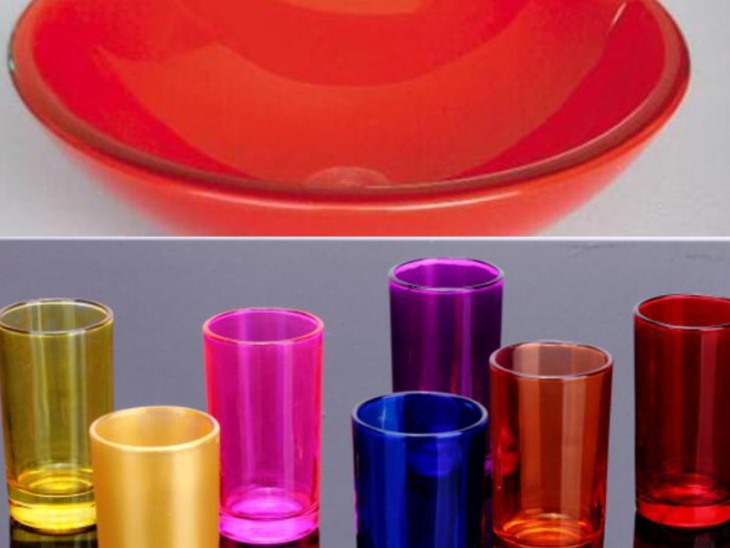There are many types of glass paints, such as self-drying glass paint, glass baking paint, oily glass paint, water-based glass paint, PU quick-drying glass paint, EP slow-drying glass paint, one-component glass paint, two-component glass paint, and painted paint. , ice paint, crack paint, water drop paint, mirror finish. The characteristics of glass paint are fullness of paint film, bright and pure color, smoothness, high hardness, strong adhesion, yellowing resistance, water resistance, acid resistance, alkali resistance, aging resistance, abrasion resistance, boring fastness, good durability and convenient construction. When curing, there is no such thing as bubbles.
Glass paint is divided into: oily glass paint and waterborne glass paint
Oily glass paint is divided into: one-component self-drying, two-component self-drying, baking paint
Waterborne glass paint is divided into: waterborne one-component self-drying glass paint, waterborne two-component self-drying glass paint, water-based glass paint
The formula mainly includes these ingredients.
Oily single component: nitro or acrylic acid plus epoxy plus pigment, coupling agent, etc.
Oily two-component: Alkyd or acrylic acid plus epoxy plus pigment, coupling agent, etc.
Oily baking varnish: acrylic acid plus epoxy plus pigment, coupling agent, etc.
Waterborne single component: waterborne acrylic acid, waterborne polyurethane plus pigment, coupling agent, etc.
Waterborne two-component: water-based acrylic, waterborne polyurethane plus pigment, coupling agent, etc.
Water-based baking varnish: modified acrylic emulsion with pigment, coupling agent, etc.
Glass lacquer application areas Glass lacquer applications are all kinds of decorative glass, furniture glass, lighting glass, art glass, sanitary glass, sliding glass, polycrystalline glass, crystal glass, tempered glass, hot-melt glass, automotive glass, glass. Masek, glassware, inlaid glass, etched glass, glass mirror and other glass products. Glass paint can be sprayed, brushed, diffused, spray coated, painted and other construction methods. The primary component of glass paint is silicone modified PU resin, auxiliaries, and purified water.

Related Industry Knowledge
- Floor paint construction acceptance standard floor paint construction plan
- Characteristics and construction technology of glass wine bottle paint
- Process difference and advantages and disadvantages of vacuum electroplating varnish and water electroplating varnish
- Waterborne metal baking paint spraying precautions
- About the construction of water-based glass bottle paint
- What are the problems with the epoxy floor paint in the underground parking lot?
- Double propylene polyurethane sealant construction process and precautions
- The difference between art floor and epoxy floor Guangzhou Tianmai supply high quality floor paint
- Several points that must be known before the construction of self-leveling epoxy floor paint
- Waterborne metal paint has become a mainstream product in the waterborne coating industry.
- Application of infinite flower water-based crack paint in various industries
- Glass paint manufacturers share glass spray paint process
- How to ensure the surface color is longer when electroplating varnish
- What are the precautions for the use of water-based metallic paints for vehicles?
- Base condition of floor paint construction
- Electroplating varnish manufacturers: oil removal available electroplating oil treatment agent
- Use of waterborne metal paint in hardware decoration
- It is very simple to use water-based electroplating varnish
- Waterborne electroplating varnish formula
- Is there any way to clean the glass paint?

